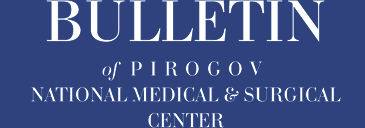Authors
Bobykin E.V.
Ural State Medical University, Yekaterinburg
Abstract
Antiangiogenic therapy has been used in Russian ophthalmology since 2008 and has become a key treatment for a few socially significant diseases, including neovascular age-related macular degeneration and diabetic macular edema. The angiogenesis inhibitor market in Russia is demonstrating qualitative and quantitative growth, with continued positive development trends. This review provides up-to-date information on ophthalmic anti-VEGF drugs registered in the country and discusses specific features of their use. The key factors influencing drug selection for specialists include a long-term safety profile based on real-world data, increased duration of action/reduced treatment burden, and the potential to improve and maintain visual acuity. Antiangiogenic therapy development trends in Russia are in line with global trends. Currently, the primary focus for improvement is the broader use of second-generation antiangiogenic drugs (including in patients with a suboptimal response to previous therapy). These drugs have the potential to significantly reduce the treatment burden and achieve optimal results in many cases. Along with the evolution of anti-VEGF drugs, approaches to assessing their effectiveness and strategies for rational use are also evolving.
Keywords: antiangiogenic therapy, anti-VEGF drug, Russia, age-related macular degeneration, diabetic macular edema, switching.
References
1. Gorkavenko FV, Goryachev AB, Ashikhmina OV, et al. Marketing analysis of the Russian pharmaceutical market for treatment of neovascular age-related macular degeneration. FARMAKOEKONOMIKA. Modern Pharmacoeconomics and Pharmacoepidemiology. 2025;18(2):184–198. (In Russ.) DOI 10.17749/2070-4909/farmakoekonomika.2025.313.
2. Moon B-H, Kim Y, Kim S-Y. Twenty Years of Anti-Vascular Endothelial Growth Factor Therapeutics in Neovascular Age-Related Macular Degeneration Treatment. International Journal of Molecular Sciences. 2023; 24(16):13004. https://doi.org/10.3390/ijms241613004
3. grls.rosminzdrav.ru [internet]. Gosudarstvennyj reestr lekarstvennyh sredstv [dostup ot 25.10.2025]. Dostup po ssylke https://grls.minzdrav.gov.ru/Default.aspx
4. Lemon J, Ip MS. Managing DME in the Age of Second-Generation Therapies. Retina Today. [Internet]. 2024 September [cited 2025 Oct 25] Available from: https://retinatoday.com/articles/2024-sept/managing-dme-in-the-age-of-second-generation-therapies.
5. Zarranz-Ventura J, Garay-Aramburu G, Calvo P, et al. Treatment intervals with first-generation anti-vascular endothelial growth factor drugs: evaluating the unmet need in a real-world neovascular age-related macular degeneration national database. Eye (Lond). Published online October 16, 2025. doi:10.1038/s41433-025-03996-8
6. Walter SD, Fekrat S. Second-Generation Anti-VEGF Agents for Neovascular AMD. Retinal Physician. 2025; 22(April):12-15. https://www.retinalphysician.com/issues/2025/april/second-generation-anti-vegf-agents/
7. Bobykin EV, Fayzrakhmanov RR, Golubev SYu, et al. Results of the first Russian survey of retinologists “SETCHAtochkaRU”. Rossijskij oftal’mologicheskij zhurnal. 2025;18(2):7-27. (In Russ.) https://doi.org/10.21516/2072-0076-2025-18-2-7-27
8. 2025 Preferences and Trends Survey Results. [Internet]. The American Society of Retina Specialists [cited 2025 Oct 25]. Available from: https://www.asrs.org/asrs-community/pat-survey/results-new/1078?evergreen = staff
9. Chakravarthy U, Armendariz BG, Fauser S. 15 years of anti-VEGF treatment for nAMD: success or failure or something in between?. Eye (Lond). 2022; 36(12):2232-2233. doi:10.1038/s41433-022-02153-9
10. Khachigian LM, Liew G, Teo KYC, Wong TY, Mitchell P. Emerging therapeutic strategies for unmet need in neovascular age-related macular degeneration. J Transl Med. 2023;21(1):133. Published 2023 Feb 21. doi:10.1186/s12967-023-03937-7
11. Downey L, Sivaprasad S, Chhabra R, et al. Dual pathway inhibition with faricimab for previously treated neovascular age-related macular degeneration and diabetic macular oedema: guidance from a UK panel of retina specialists. Eye (Lond). 2024;38(16):3077-3086. doi:10.1038/s41433-024-03223-w
12. Hanson RLW, Airody A, Sivaprasad S, Gale RP. Optical coherence tomography imaging biomarkers associated with neovascular age-related macular degeneration: a systematic review. Eye (Lond). 2023;37(12):2438-2453. doi:10.1038/s41433-022-02360-4
13. Riedl S, Vogl WD, Waldstein SM, Schmidt-Erfurth U, Bogunović H. Impact of Intra- and Subretinal Fluid on Vision Based on Volume Quantification in the HARBOR Trial. Ophthalmol Retina. 2022;6(4):291-297. doi:10.1016/j.oret.2021.12.007
14. Bressler NM, Beaulieu WT, Glassman AR, et al. Persistent Macular Thickening Following Intravitreous Aflibercept, Bevacizumab, or Ranibizumab for Central-Involved Diabetic Macular Edema With Vision Impairment: A Secondary Analysis of a Randomized Clinical Trial. JAMA Ophthalmol. 2018;136(3):257-269. doi:10.1001/jamaophthalmol.2017.6565
15. Chang YC, Huang YT, Hsu AY, et al. Optical Coherence Tomography Biomarkers in Predicting Treatment Outcomes of Diabetic Macular Edema after Ranibizumab Injections. Medicina (Kaunas). 2023;59(3):629. doi:10.3390/medicina59030629
16. Zola M, D’Alessandro E, Sherif M, et al. Refractory neovascular age-related macular degeneration: time-dependent changes of central retinal thickness with anti-VEGF treatment. Graefes Arch Clin Exp Ophthalmol. 2021;259(6):1477-1486. doi:10.1007/s00417-020-05000-3
17. Mones J. Non-responders neovascular AMD concept and spectrum. Presentation at the EURETINA 2021 Virtual (Instructional Course 8: Non-Responders in Neovascular AMD, 09.09.2021).
18. Monés J. A 10-point score classification for anti-VEGF response in exudative AMD. Graefes Arch Clin Exp Ophthalmol. 2022;260(6):2073-2074. doi:10.1007/s00417-021-05478-5
19. Bobykin EV, Morozova OV, Krokhalev VYa, Varezhkina ES. Intraocular Inflammation Associated with Intravitreal Drug Injections: Current State of the Problem. Ophthalmology. Eastern Europe, 2024; 14(1):129-145. (In Russ.) DOI 10.34883/PI.2024.14.1.025.
20. Granstam E, Aurell S, Sjövall K, Paul A. Switching anti-VEGF agent for wet AMD: evaluation of impact on visual acuity, treatment frequency and retinal morphology in a real-world clinical setting. Graefes Arch Clin Exp Ophthalmol. 2021;259(8):2085-2093. doi:10.1007/s00417-020-05059-y
21. Madjedi K, Pereira A, Ballios BG, et al. Switching between anti-VEGF agents in the management of refractory diabetic macular edema: A systematic review. Surv Ophthalmol. 2022;67(5):1364-1372. doi:10.1016/j.survophthal.2022.04.001
22. Korotkikh SA, Bobykin EV. Our experience in visual functions’ improvement in patiens with “wet” age-related macular degeneration at switching from one anti-VEGF agent to another. Ophthalmology Reports, 2017;10(3):67-73. (In Russ.) DOI 10.17816/OV10367-73.


